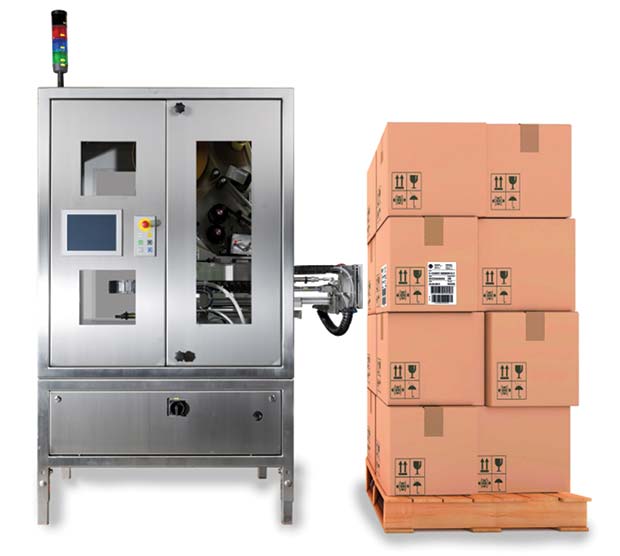There are many critical issues to bear in mind when choosing new or replacement machinery – reliability and functionality being two of the most important. But cost, quality, ease of use, and the ability to integrate with existing systems will also play a part. But how you navigate the minefield of suppliers who all claim that their product will be best for your operation? Print and Apply experts Logopak take us through a few of the key considerations when choosing a pallet labeller.
 Functionality
Functionality
How many labels do you need to apply? What is the speed of your line? Do you ever need to label a part-pallet? There are some fantastically complex label applicators available, but most operations require SSCC labels to be applied to 2 sides of a pallet to fulfil supply chain requirements.
Consider if you need a one-stop or two while the labels are applied. All of these questions will inform your choice of labeller. You don’t want to pay for unnecessary functionality if you have a simple operation, but you might need a bespoke applicator if your requirements are more complex.
Integration
How easy is it to integrate the labeller with your in-house systems? Real-time connected processes require seamless access to your data from warehouse management systems such as SAP. A seamless integration platform will remove risk and offers complete control from a single point on the line.
Quality
Paramount in the decision making will be the engineering quality of the products each company supplies, looking at factors such as the commitment to research and development, their time in business, their existing customer base, and their reliance on third party parts. For example, Logopak print and apply machines are made in Germany using precision engineering techniques. They design and build their labelling machinery using no third party parts, where others integrate printheads and other parts manufactured elsewhere.
Cost
Of course, price is an important and often overriding factor. A low cost machine that works for 2-3 years and can be discarded and replaced after that time is one option. Others will choose to play the long game and make a heavier investment in a more robust unit that will reliably perform for 10-15 years with little downtime and a low overall cost of ownership.
However, the low cost option might be detrimental to line efficiencies over a short lifetime, and the cost implications of this will outweigh any initial savings made. Many are quick to regret a low cost but unreliable choice once efficiency figures begin to suffer.
Consumables
On critical production lines which require constant high speeds or low downtime, it’s also important to look at the implications of consumables. Poor quality labels and printing ribbon can seriously impede an efficient line operation, even if the machinery is reliable.
For example, labels made with high quality materials, consistency in die-cutting, accurate slitting and winding tension and larger reels holding up to 40% more than others can significantly increase the consistency and efficiency of the operation on packaging and production lines.
Print Quality
With barcode labels being scanned at various points throughout the supply chain, the readability and quality of the printing needs to comply to industry standards. Integrated barcode verification and validation scanners will pick up on any problems before the goods leave the warehouse, allowing for remedial action to be taken immediately. A good pallet labeller will perform both of these checks automatically.
Sometimes it is useful to visit a similar operation to evaluate how their machines have performed since installation – how long they have been in place, what the customer service is like, downtime statistics and running costs. An existing customer will give an honest appraisal of the pros and cons of the equipment and supplier.
LOGOPAK




Comments are closed.